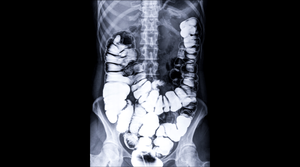Lab-on-a-Chip Using Lasers and Electric Fields Has Diagnostic Device Potential
January 9, 2013
Purdue University researchers have demonstrated a new technology that combines a laser and electric fields to create tiny centrifuge-like whirlpools for separating particles and microbes by size--a potential lab-on-a-chip system. Above, the technique is used to collect Shewanella oneidensis bacteria. (Image courtesy of Purdue University) |
Researchers at Purdue University (West Lafayette, IN) have engineered a new lab-on-a-chip device that could potentially be used in future medical diagnostic applications. Dubbed rapid electrokinetic patterning (REP), the system uses a laser and electric fields to produce centrifuge-like whirlpools for separating particles and microbes by size. "The new results demonstrate that REP can be used to sort biological particles but also that the technique is a powerful tool for development of a high-performance on-chip bioassay system," remarks Steven T. Wereley, a professor of mechanical engineering at Purdue.
Employing a highly focused infrared laser, the technology heats fluid in a microchannel containing particles or bacteria. An electric field is then applied, combining with the laser's heating action to circulate the fluid in a 'microfluidic vortex,' creating a centrifuge that isolates specific types of particles based on size. Particles of different sizes can be isolated by changing the electrical frequency, and the vortex moves wherever the laser is pointed, enabling the researchers to position specific types of particles for detection and analysis.
"By properly choosing the electrical frequency we can separate blood components, such as platelets," Wereley says. "Say you want to collect Shewanella bacteria, so you use a certain electrical frequency and collect them. Then the next day you want to collect platelets from blood. That's going to be a different frequency. We foresee the ability to dynamically select what you will collect, which you could not do with conventional tools." REP could be suitable for medical diagnostic applications because it requires only tiny samples, unlike conventional tools.
About the Author(s)
You May Also Like


